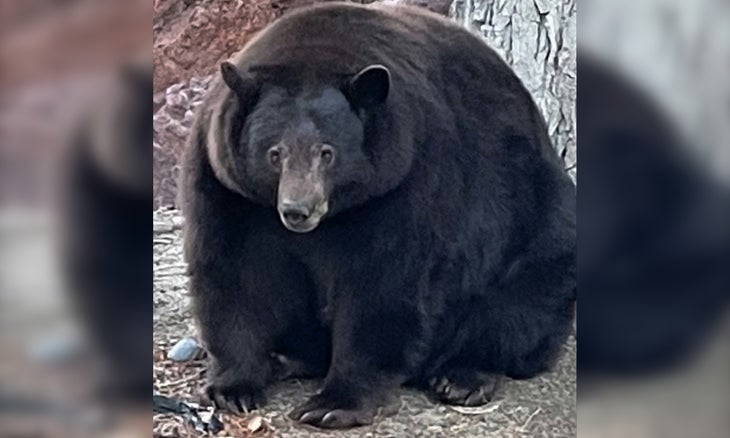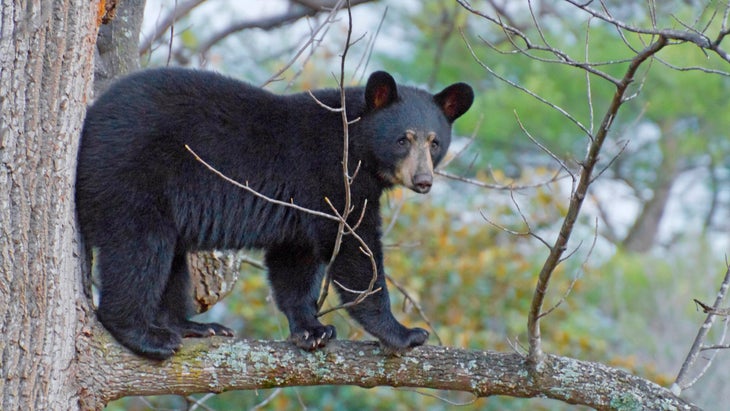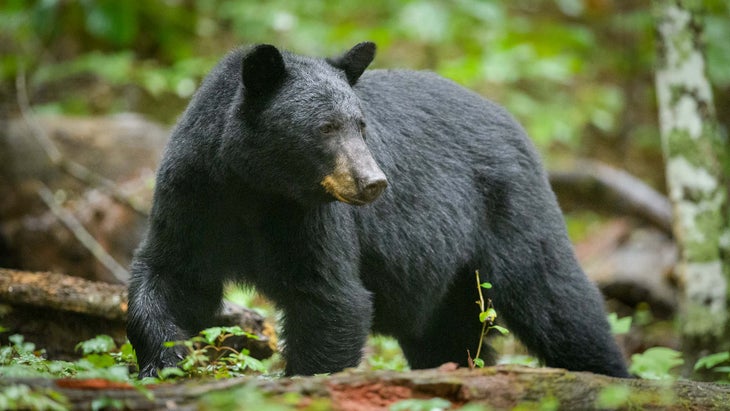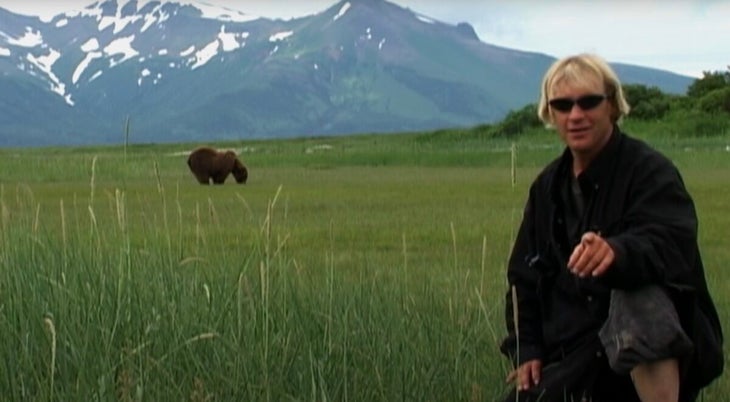



We’ll never get tired of talking about bears. Why would we? The super-size predators are among the most breathtaking—and nerve-wracking—megafauna in North America. For better or for worse, everyone who backpacks long enough and widely enough eventually has a story about an encounter with one. This year, we wrote about a burglar bear who tore apart homes across Lake Tahoe in search of snacks before the law caught up with her, the decline of a popular bear safety method, and the legacy of what’s probably the most famous fatal bear attack in the history of the world. Read on for our six most-read bear stories of 2023.

The bulbous bear dubbed Hank the Tank ambled into the public consciousness in 2022 after locals around Lake Tahoe blamed the bruin for breaking into several houses and ransacking them in search of food. But every neer-do-well has to face the music eventually—and Hank’s life of crime wasn’t as clear-cut as it seemed.
Original estimates suggested that the bear could also be responsible for as many as 150 incidents of aggressive behavior, spurring state and local officials to discuss euthanizing her (and pro-bear advocacy organization the BEAR League to mount a furious defense.) However, officials commuted Hank’s death sentence after DNA evidence showed that there were actually three local bears that exhibited similar behavioral patterns in the Tahoe area, and that Hank the Tank was not solely responsible for the incidents.

The bear hang is the original method of keeping food safe from hungry wildlife during a backpacking trip. But with bears getting better at pilfering snacks, and bear canisters getting more common, is it time to call time on bear-bagging? We asked the experts to weigh in.
Wilkinson notes that even with perfect execution, there is no such thing as a bag that a bear can’t reach. Hungry bears can scoot out on branches and send their cubs out on limbs that they can’t reach themselves. Some have even learned to bite through the cord anchoring the bear hang, dropping the whole package to the ground. Worse still, once a mother bear learns how to beat a bear hang, she’ll pass it along to her cubs, too.

The AT crosses some of the most densely-populated bear habitat in the US, and encounters with curious or mischievous bruins are a common part of the thru-hiker experience. But in some places, the bears are getting bolder—and beginning to change backpackers’ behavior, too.
Overly bold bruins have been a problem for hikers in North Carolina and Tennessee over the past several years, with a number of shelters and campsites closing temporarily after the food-conditioned animals began seeking out sustenance from hikers. In 2021, the USFS closed miles 451 to 464 of the AT in Tennessee to camping because of bear activity. Further closures followed in 2022: In October, officials closed the trail to camping from the Tennessee-Virginia border to the trail’s intersection with Highway 421, while earlier in the year New Jersey closed a campsite after a bear attempted to enter a hiker’s tent.

Werner Herzog’s well-known documentary Grizzly Man made activist Timothy Treadwell a household name, and his gruesome fate a byword for one of the worst things that can happen to a person in the wild. So when we found out our assistant editor Emma Veidt had never seen it, we enlisted professional wildlife biologist Wes Larsen of the podcast Tooth and Claw to watch it with her and provide commentary, and recorded their discussion.
“I guess, in a weird way, because Werner Herzog made a documentary about him, [Timothy Treadwell was effective in his mission]. I think a large number of people now see that grizzly bears aren’t bloodthirsty mindless killers, or they do have behaviors that are somewhat predictable to where people can even coexist with them. On the other hand, his mission was a failure in that he was trying to protect those specific bears, and he got at least two of them killed. They killed two of these bears that were feeding on him, and who knows how many other bears became so habituated to humans that they also had to be killed because of problem behavior.”

Half a century ago, Michael Ober was a ranger in Glacier National Park when he found a hiker lying in the middle of a trail, crusted with blood. Over the course of a halting conversation, he realized what had happened: the man had been attacked by a bear.
Upon arriving, we could see what had happened with perfect clarity. True to Randy’s story, a black bear had collapsed his tent in the early morning hours and had chased him up a tree, seizing his legs and pulling him down. He fell through the branches and onto the side of his face, breaking his nose, causing his teeth to take a chunk out of his tongue, and fracturing an orbital socket and a cheek bone. Despite the gashes and puncture wounds on his feet and lower legs where the bear had bitten him, he managed to thrust his bare feet into his boots, grab a large D cell flashlight, and flee down the trail. He hiked all night. At little creeks, he filled the lens cavity of his flashlight with water to quench the thirst brought on by blood loss.

If you went to see Elizabeth Banks’s Cocaine Bear in theaters this year, you probably heard that the gorefest about a coked-up bear that mauls a string of unfortunate hikers and first responders was based on a true story. But how much was real and how much was movie magic? We watched it to find out.
Admittedly, there isn’t a lot of peer-reviewed research about what blow does to bears. Nobody actually knows what went down when the bear (dubbed Pablo Escobear, obviously) got a noseful of coke. We only saw the aftermath of its fatal overdose: Investigators found that the real Cocaine Bear didn’t even eat all 75 pounds of blow that landed in the forest. It had just enough that by the time the Georgia Bureau of Investigation investigated the bear’s dead body, its stomach was packed to the brim with the drug, but authorities say it had only 3 to 4 grams of it in its bloodstream at the time of its death. That, of course, is too tame for Hollywood.
From 2023

